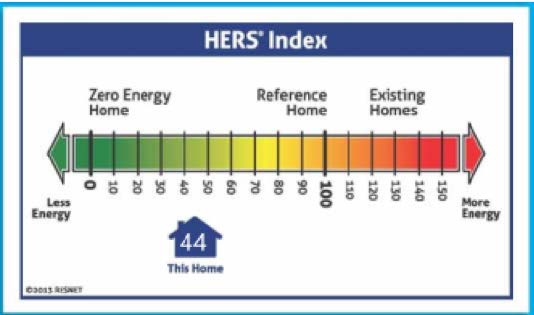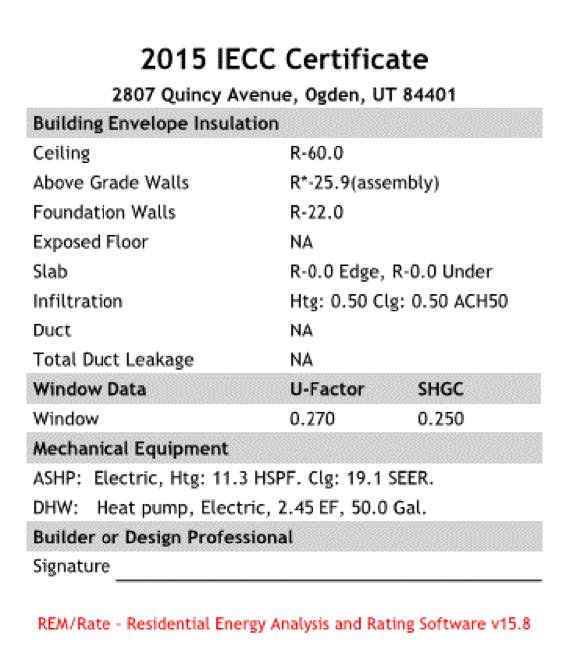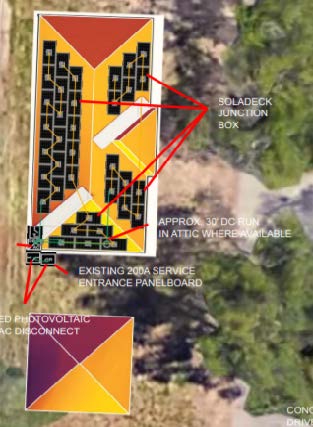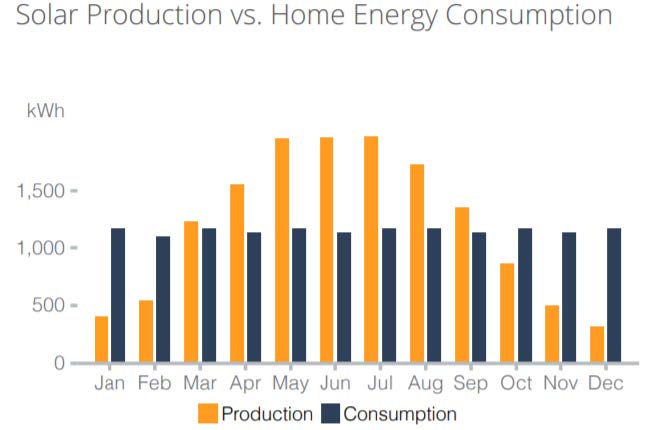Complete Energy Analysis and Model
During the measured contest 4.6 house occupancy, our team will use the home's kitchen and adjacent dining area for the dinner party. The kitchen counter has space for up to four bar stools and the dining table can seat six to eight guests.
Fuel
The homes Utility’s will run exclusively on electricity. The heating and cooling will be achieved with the use of Mini Splits The price configuration is based on the utility company, Rocky Mountain Power, as electricity supplier for the Weber County Area. The Energy Costs are calculated without renewable energy. With the
addition of renewable energy, the utility pricing with be 96 dollars yearly. This is a result of Rocky Mountain Powers required tie in and batter fee of 8 dollars a month.
Energy Efficiency Goals
The purposed plans meet all requirement to be EPA Energy Star Version 3.1 Certified Home. All appliances added to the home will be Energy Star Verified.
HERS Index
The Projects Envelope is a HERS score of 44 without PV.

Energy Production
The house will be net zero through the produce of solar energy. The project will be able to generate at least 20 kilowatt-hours in a 24-hour period. The homes solar will produce 15,153 kWh minimum per year to support the homes energy load and the charging and operation of an electric vehicle driven 20 miles per day. The house will be able to perform off grid with critical loads for up to three days.

Energy Analysis
The buildings' ratings were configured using REM Rate v15.8. The project ratings are based exclusively on the home plans and will require field confirmation upon project completion. The building plan is a single-family home to be located in Ogden, Utah. The home is 2612 sq. ft and has a volume 20480 conditioned space. The foundation materials will consist of ICFs with a R-22 rating. The above-grade walls will be made up of SIPs R-25.9. The roof is a combination of Raised Hill
Trusses with blown insulation with an R-60 value. In accordance with climate zone 5B the homes, thermal performance meets the 2015 IECC Building UA Compliance requirements.

Photovoltaic System
 Our photovoltaic system is designed to operate in an islanded state for 72 hours. The design of our solar array allows for our critical loads, refrigerator, freezer, etc ., to operate when we are not connected to the grid. In the event of a power outage, which would disconnect our home from the main power line and ultimately leave us “in the dark,” our home will still be functioning at near full capacity. The solar panels installed will continue to consume energy from the sun and convert that solar energy to usable energy. Solar panels are made up of silicon photovoltaic (PV ) cells. The PV cells generate direct current (DC) electricity from sunlight. DC cables connect the individual solar panels to one another. The energy solar panels receive from the sun is not heat but light energy, also known as irradiance. A solar array is a group of solar panels that are installed together, these are known as ‘strings.’ There are many factors that influence the amount of solar energy that is generated by a solar array, which includes the orientation and tilt of the panels. Ambient pressure, shading, and dirt have all been taken into careful consideration when designing our solar array, as they can lead to losses of the solar energy that is generated by the panels.
Our photovoltaic system is designed to operate in an islanded state for 72 hours. The design of our solar array allows for our critical loads, refrigerator, freezer, etc ., to operate when we are not connected to the grid. In the event of a power outage, which would disconnect our home from the main power line and ultimately leave us “in the dark,” our home will still be functioning at near full capacity. The solar panels installed will continue to consume energy from the sun and convert that solar energy to usable energy. Solar panels are made up of silicon photovoltaic (PV ) cells. The PV cells generate direct current (DC) electricity from sunlight. DC cables connect the individual solar panels to one another. The energy solar panels receive from the sun is not heat but light energy, also known as irradiance. A solar array is a group of solar panels that are installed together, these are known as ‘strings.’ There are many factors that influence the amount of solar energy that is generated by a solar array, which includes the orientation and tilt of the panels. Ambient pressure, shading, and dirt have all been taken into careful consideration when designing our solar array, as they can lead to losses of the solar energy that is generated by the panels.
After the panels consume the light energy from the sun this energy must be converted to alternating current (AC) electricity. Before being converted the light energy consumed is essentially useless. Without an AC converter, we get no benefit from solar panels. In order for our solar panels to be functioning off the grid, it is essential that the AC converter be working properly. Our power reserve continues to keep the AC converter operating even when we are detached from the grid which allows our solar array to continue to absorb and generate electricity.
Statement of Grid Islanding Capability
There are three main types of solar power systems: on-grid, off-grid, and hybrid. The system we have in our extremely energy-efficient home operates as a hybrid system but also is capable of operating as an off-grid system. This means that although our home is capable of operating as an off-grid system we still are connected to the grid for the times when the grid is functioning properly. Since our system is an off-grid system when the connection to the grid is lost we will have enough power to continue to operate the critical loads outlined in the rules and guidelines. Our power generated from the solar panels is stored in a Rheem heat pump. Although the system is designed for the Rheem heat pump to store the energy that allows our system to operate when detached from the grid, it is possible to install a battery bank to store the usable AC electricity. Our photovoltaic system includes 36 – Triple Black, Tier 1, Solar Panels Solar Edge Inverters with 36 – DC optimizers. The system size is 11.16 kW DC and has an annual production of 14,360 kWh. The system we have will generate 104% of the energy needed to run the house from solar energy every year.

